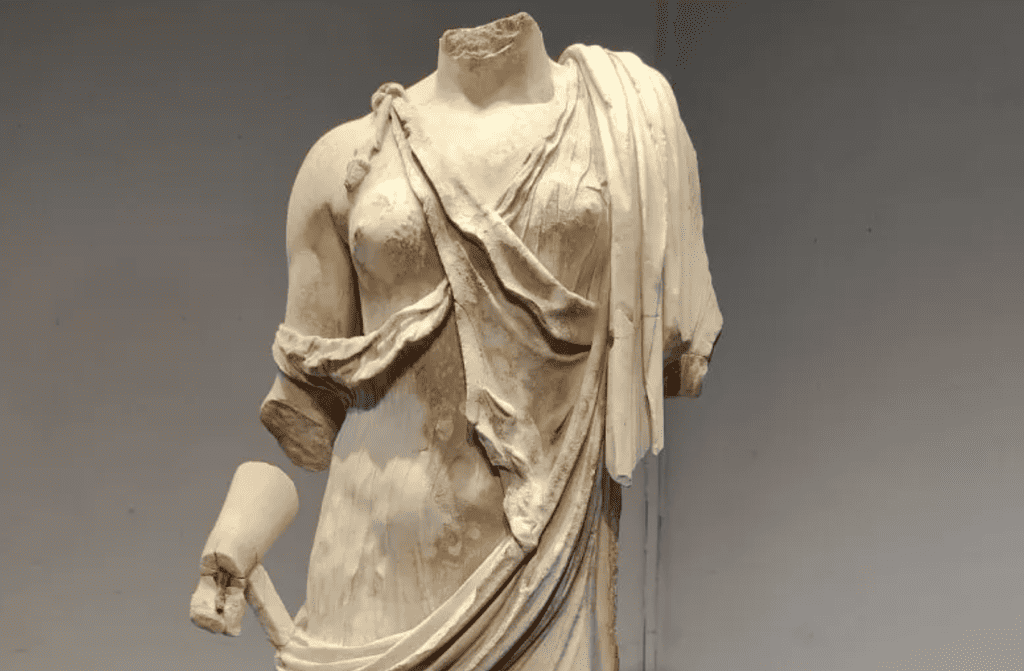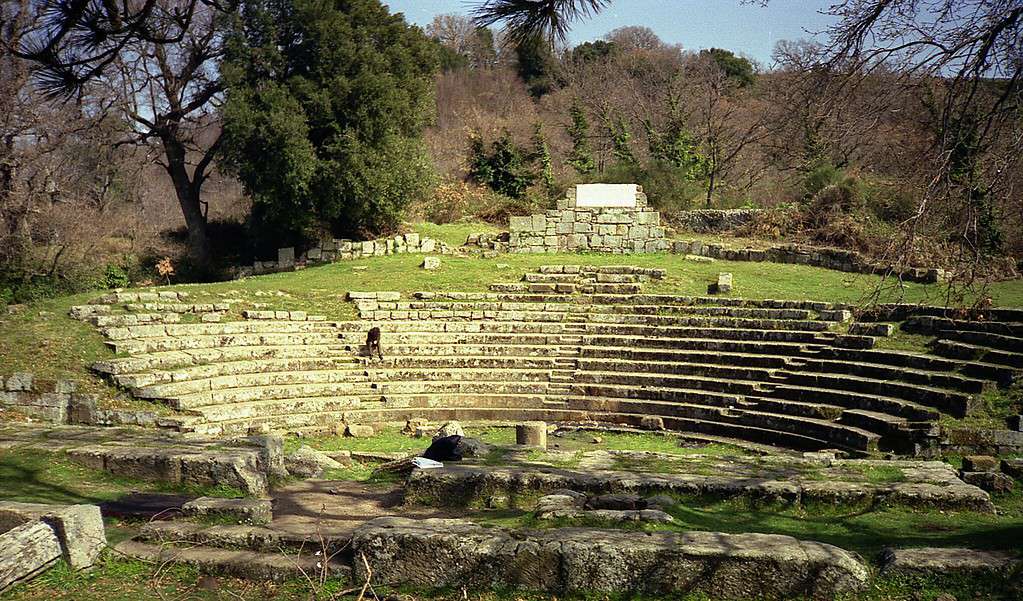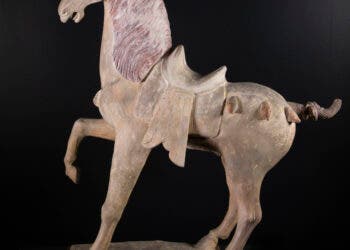In the picturesque Italian town of Frascati, once known as Tusculum, archaeologists made a discovery that captures the imagination of historians, archaeologists, and the world at large. A team from the Spanish School of History and Archaeology in Rome (EEHAR-CSIC) has unearthed a remarkable marble statue dating back nearly 2,000 years, offering tantalizing clues about the city’s rich past. As part of the architectural ensemble of a thermal complex, an enigmatic statue of a headless and armless female figure has been discovered.

Founded in the 10th century BC, Tusculum was one of the most important cities of the Latin League. The Latin League was an ancient confederation that opposed the expansionism of Rome. Needless to say, they didn’t do so well and were defeated in the famous battle of Lake Regillo in 496 BC.
Tusculum lies on the outskirts of today’s Rome and it is also a mythical city. According to legend, the city was founded by the son of Ulysses, Telegonus, 20 years after the destruction of Troy. The city, now called Frascati, is an impressive archaeological site where researchers unearthed impressive findings, such as a thermal complex from the Hadrianic period (2nd century AD).
Now, a team from the Spanish School of History and Archaeology in Rome has found an “exceptional” marble statue that dates to around 2,000 years ago.
“At the time of the discovery, only part of the statue’s back was visible and it was lying on a thin layer of painted stucco, so it would have formed part of the ornamental programme of the baths,” says Antonio Pizzo, director of the EEHAR-CSIC, the institution that has been carrying out the excavations at the archaeological site
A life-size nymph
The statue represents a life-size human figure of a woman but has no head or arms. It probably belonged to the westernmost architectural decoration of the previously found Hadrian Baths, the researchers believe. The sculpture is probably a representation of a nymph from Greek mythology—a lesser female deity symbolizing nature.

Nymphs, such as other goddesses (excluding the Hamadryads), are known for being immortal. They were classified into distinct subgroups, such as the Meliae linked to ash trees, Dryads associated with oak trees, Naiads residing in freshwater environments, Nereids inhabiting the seas, and Oreads dwelling in mountainous areas.
Researchers also believe that there’s a connection between the statue and the cult of the god Dionysus — the god of wine, called Bacchus by the Romans. Dionysus is a fascinating figure in ancient Greco-Roman mythology, often associated with wine, fertility, and revelry. He is the god of the vine, grape harvest, winemaking, and theater. His cult was known for ecstatic rites such as the famous Bacchanalia, which often involved music, dancing, and the consumption of wine.
Cercertain distinct features of the statue suggest a link to Dyonisus. In particular, a key sign is the representation of a fawn skin on the statue, resembling the attire worn by the followers of the cult dedicated to Dionysus.
“Some characteristic elements, such as the fawn skin covering her shoulders, allow us to hypothesise that this is a figure that can be traced back to a Dionysian context, chronologically dated between the middle of the 1st century BC and the middle of the 1st century AD,” Pizzo, director of the EEHAR-CSIC, said in a news release.
No doubt, despite all the wonderous archaeology uncovered in and around Rome, there’s still plenty left to discover.






